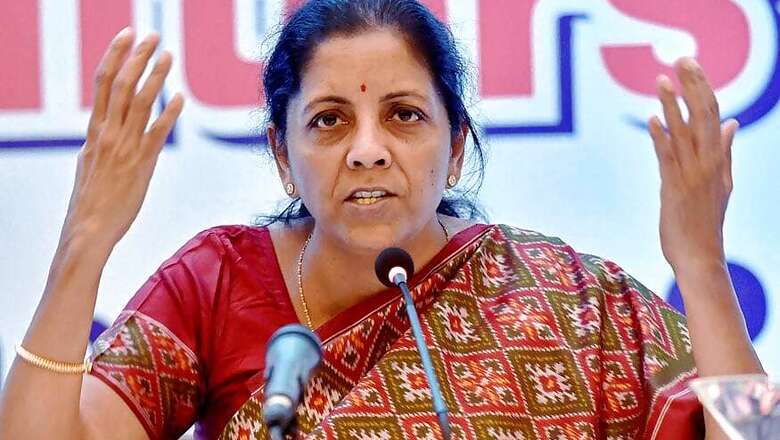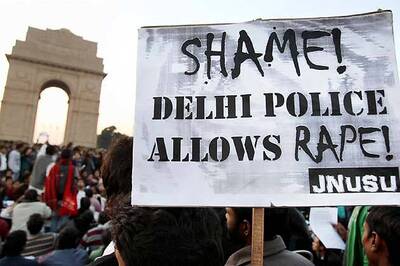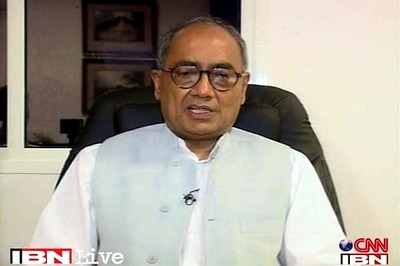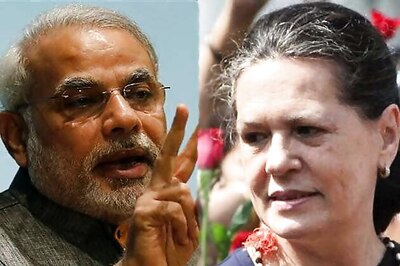
views
On the face of it, nominating two women to the all-powerful Cabinet Committee on Security is proof of the BJP's commitment to nari sashaktikaran (women's empowerment). Take a telescopic view and it becomes evident that the party suffers from cherry-on-the-top syndrome: the presence and influence of women falls off abruptly after the top rung.
Enticing as Sushma Swaraj and Nirmala Sitharaman appear - the only women after Indira Gandhi to hold the portfolios of External Affairs and Defence – the fact is that they are precariously perched on top of a patriarchal pudding. Among the handful of women in the upper echelons of the BJP, very few can be said to have come up from the grassroots, that is, the Rashtriya Swayamsevak Sangh and its affiliates.
Nirmala Sitharaman joined the BJP only in 2006. Smriti Irani parachuted into the party in 2003 (and the Union Cabinet in 2014) kyunki politician bhi kabhi TV artiste thi. Uma Bharthi is a sadhvi, who came into prominence with the Ram Janambhoomi movement. Maneka Gandhi comes from a political family, albeit on the other side of the divide. Sushma Swaraj was a socialist and member of the Janata Party government, who later joined the BJP. She has certainly paid her dues, but continues to regarded as an “outsider”. Of the entire pantheon of top-rung women leaders, Sumitra “Tai” Mahajan is both a grassroots worker and sangh “insider”.
Like an inverted pyramid, the presence of women thins from top to bottom. Women comprise 20 per cent of the Union Cabinet. But in the council of ministers as a whole, the percentage stands at around 12. In the party organizational set-up, which vowed to reserve 33 per cent of all legislative seats for women as recently as February this year, the female presence is even more rarefied. Only one of eight general secretaries (according to bjp.org) is a woman (Saroj Pandey, a former MP). Again, only one of seven vice-presidents is a woman and her name does not ring a bell even among party workers (she is Renu Devi, a four-term MLA from Bihar). As for the national executive, less than 10 per cent of its members are women. In Rajasthan, a state headed by a woman (again, from a political family), some 20 of 160 BJP MLAs are women and only one is in the state cabinet. The number of women in leadership/decision-making roles is thus limited.
It is not as if the RSS or its political wing, the BJP, fail to mobilize women. An array of women's organizations, such as the Rashtriya Sevika Sangh, the Durga Vahini and BJP Mahila Morcha are affiliated to the RSS. In addition, women participate actively in the Akhil Bharatiya Vidyarthi Parishad (ABVP), the BJP Yuva Morcha and sundry other sangh affiliates. However, their role is seen as cultural rather than political and so, few of these women make the transition to electoral politics – unless they happen to be sadhvis or come from a political family. Currently, the majority of the BJP’s women MPs owe their political careers to family, or are inductees, like Kiron Kher (from showbiz) and Rama Devi (from the RJD).
The disconnect between mobilization of women at the grassroots level - where they are ideologically conditioned - and electoral politics is pronounced. Unable or unwilling to throw up its own women leaders, the BJP needs to 'import' women from elsewhere. And having parachuted into the party and/or Parliament, even the most vocal of women legislators falls silent. As women, they have no access to the sanctum sanctorum - the RSS core committee, which pretty much decides the course of the right wing movement in India.
The RSS set-up is profoundly patriarchal. Sarsanghchalak Mohan Rao Bhagwat, questioned at the Indian Women's Press Corps a few years ago on the RSS' refusal to accommodate women, fell back on the hoary argument that it already had a women's wing. The RSS ostensibly subscribes to the “equal but different” narrative, but sees women primarily as the vehicle of good sanskars, embedded in the home. The difference of nomenclature says it all: the word 'swayam' (self) is missing from the title of the women's wing.
Historian Tanika Sarkar observed, in an article on the “gender predicament” of the RSS: “The sangh parivar...proudly forefronts elected women members in the higher legislative and executive bodies… (But) the women thus exalted do not come from women’s organizations, nor do they have prominent bases among the women of their own political clusters.”
This is not to underplay the talent or competence of a Vasundhara Raje, Nirmala Sitharaman, Uma Bharti, Sushma Swaraj or Maneka Gandhi, but to highlight the fact that these exceptional women needed either lineage or a political patronage to find a place in the male-dominated sangh establishment. As long as the RSS does not throw open its doors to women and acknowledge their right to an equal share of the public sphere, they will remain outside the power structure, tokenisms to justify the beguiling catchphrase of women's empowerment.
It can be argued that other political parties have an equally poor track record, notably the Left, which admitted its first women politburo member only in 2005 (who happened to be the wife of the erstwhile general secretary). The point being that with 1.2 million women representatives in elected local bodies, but only 11.3 per cent in the Lok Sabha, it's time the Women's Reservation Bill was dusted off and revived.
(All views are personal)




















Comments
0 comment